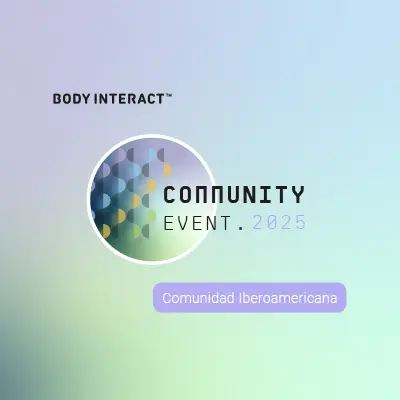
Presentation by Dr. Dea Goderdzishvili
From being a student practicing with Body Interact to an educator and research specialist implementing the patient simulator in the curriculum of the Tbilisi Medical Academy (TMA), Dr. Dea Goderdzishvili was our first speaker at the Global Network Event 2022 sharing how Body Interact fosters Clinical Reasoning development.
Graduated from David Tvildiani Medical University in 2021, Dr. Dea was first introduced to the Body Interact platform in her 5th-year academic studies. Due to the pandemic and the need to redefine clinical practice for future healthcare professionals, virtual patients became the solution for the learning and evaluation moments.
A few months later, she joined Petre Shotadze Tbilisi Medical Academy. Since then she has been coordinating the integration of Body Interact into the university curriculum, facilitating the Faculty and Student Orientation Sessions on how to use Body Interact, and continuously monitoring and evaluating the integration process.
How to implement Body Interact in the university’s daily life?
Since 2021, TMA has been implementing Body Interact as a tool for Clinical Reasoning development in four major ways.
Teaching
Body Interact has been introduced into the 4th, 5th, and 6th-year educational programs.
It is used to practice patient interaction and communication, as well as a tool to foster critical reasoning development and to inspire group discussions and debates among students.
Starting as a friendly competition, to see who gets the best Global Scores, it contributes to the final goal of striving for academic success in an interactive and safe environment through an educational and entertaining platform.
Examination process
In terms of the evaluation process, specific clinical scenarios are employed for mid-term examination purposes. According to Dr. Dea, this method allows the university to understand how well students can incorporate their theoretical knowledge and apply it.
In practical terms, the Global Scored obtained by students reflects their mid-term marks. If they receive a score of 70% to 80%, they get a C mark, from 80% to 90% a B, and from 90% to 100% an A.
Research
Recently piloted among the 6th year- year students, the university assigns two Body Interact cases that students have to complete. Based on this, they have to write the case report and formulate the PICO method and Myth Buster questions.
This new method gives educators the ability to observe how well the students can diagnose the patient, how well they can identify key features of unique conditions, and if they can construct well thought out further plans of action.
Earlier clinical exposure
Lastly, the TMA is testing the implementation of Body Interact in their 4th-semester students who are still learning the basic disciplines of medicine.
This way, after having real-life patient interactions and discussing in groups specific subjects, they will have the opportunity to observe the same topics in the virtual simulator.
Explore the details of this presentation in the video:
Review the conference in full in our article: Global Network Event 2022 By Body Interact
by Rita Flores – Body Interact Mkt and Communication Coordinator








